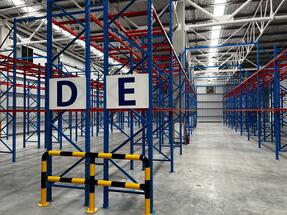This is the tip of the iceberg. Tons of concrete and metal that one tends to forget when ordering products online. While e-commerce may be nibbling away at market share from physical stores and shops, it remains completely dependent on warehouses, which are very real and will continue to grow across the entire territory in the years to come.
According to figures from real estate group CBRE, nearly 27 million square meters will be needed in Europe by 2025 to meet demand. Warehouses are the cornerstone of logistics, allowing for the storage, packing, and preparation of the millions of packages ordered online. Naturally, the pandemic-related lockdowns have accelerated online shopping, which represented €112 billion in France last year, an 8.5% increase over the previous year. This was good news for large retail chains, which compensated for their store closures with online deliveries, but created a new logistical challenge to deliver packages on time.
Difficult to find square meters:
In recent months, warehouse inaugurations have multiplied. Last week, office supply specialist Manutan inaugurated a 9,000 square meter extension to its Gonesse warehouse, which now has a total surface area of 41,000 square meters to "store twice as many products" and "process four times as many daily orders." Earlier this month, real estate company Argan delivered a new 22,000 square meter warehouse near Orleans, already rented to FGD Group, a leader in the non-food market for large-scale distribution.
"It's a tight market where it's very difficult to find additional square meters," comments Diana Diziain, deputy director of Afilog, an association that brings together industry players.
Today, warehouses over 5,000 square meters represent nearly 90 million square meters, almost the size of Paris. If this number is extended to the land area mobilized by entire sites, we are even approaching 300 million square meters for just over 4,000 establishments. And the number is growing: "We have built 16 million square meters in the last ten years, and we expect to do the same in the next ten years," summarizes Diana Diziain.
Moderate growth:
In reality, this dynamic is still relatively moderate, and 2020 was even a small year: 2 million square meters created compared to 2.4 million in 2019 and 3.9 million in 2018. Perhaps this is due to a postponement of projects that could inflate future numbers.
"There will be slight growth, but not as strong as today," Jean-Claude Le Lan, the head of Argan, nevertheless cautions. "E-commerce is a growing sector, but it's primarily pure players who need new warehouses."
Pure players are companies like Amazon or Cdiscount. The former has built nearly 800,000 square meters between 2015 and 2019, compared to 268,000 square meters for the French company. This growth is likely to slow down. "Demand will continue to be stimulated, but not really by pure players," says Diana Diziain.
Most current warehouses have nothing to do with these players. "The large distribution sector represents 50% of warehouses," reminds Jean-Claude Le Lan. They do not necessarily need to create extensions but often have to adapt facilities that have become obsolete. "What's new today is urban warehousing with small surfaces," adds the head of the company. These are obviously very expensive surfaces.
In short, we are far from a construction boom.
Source: BFM Business


